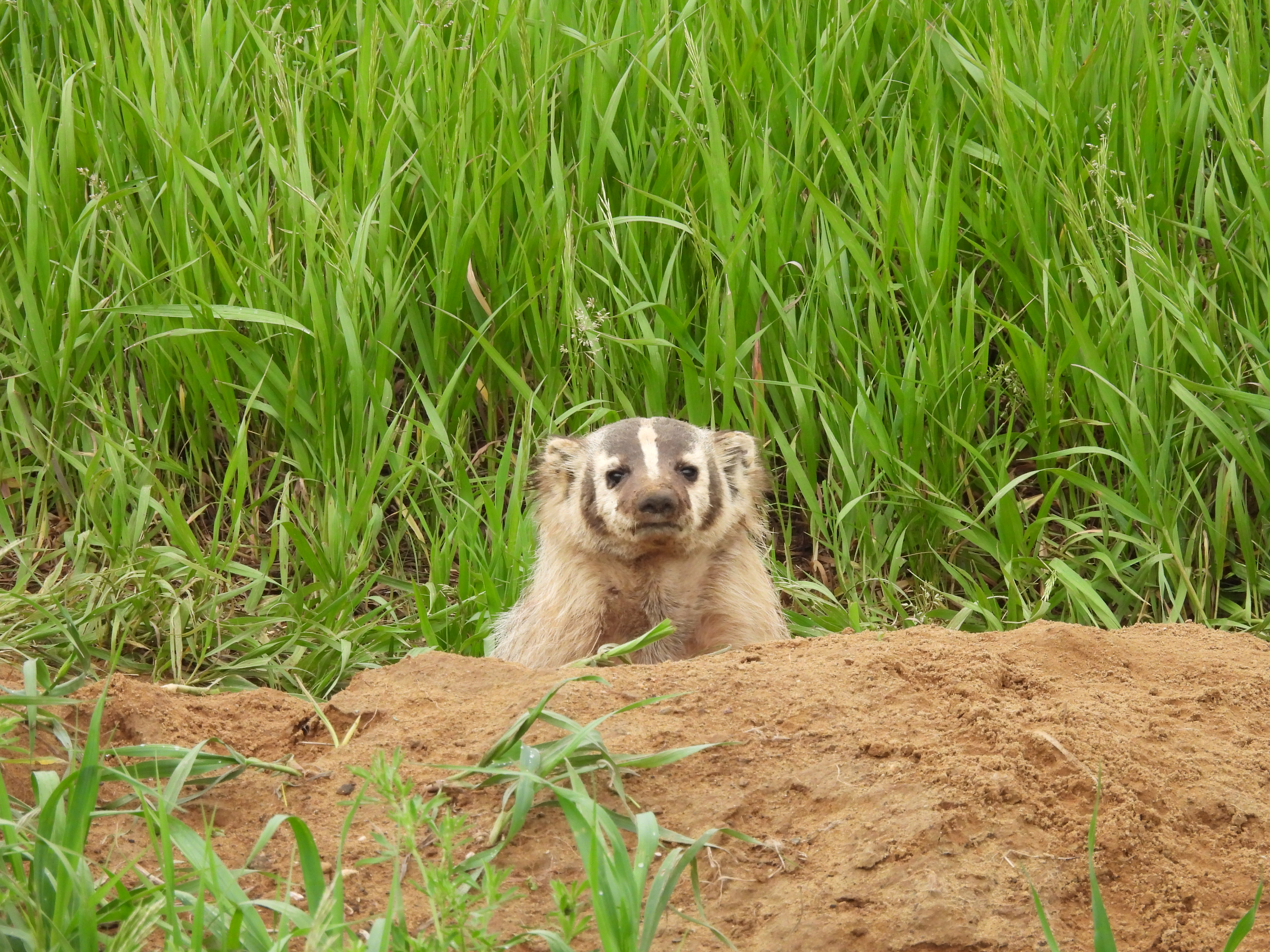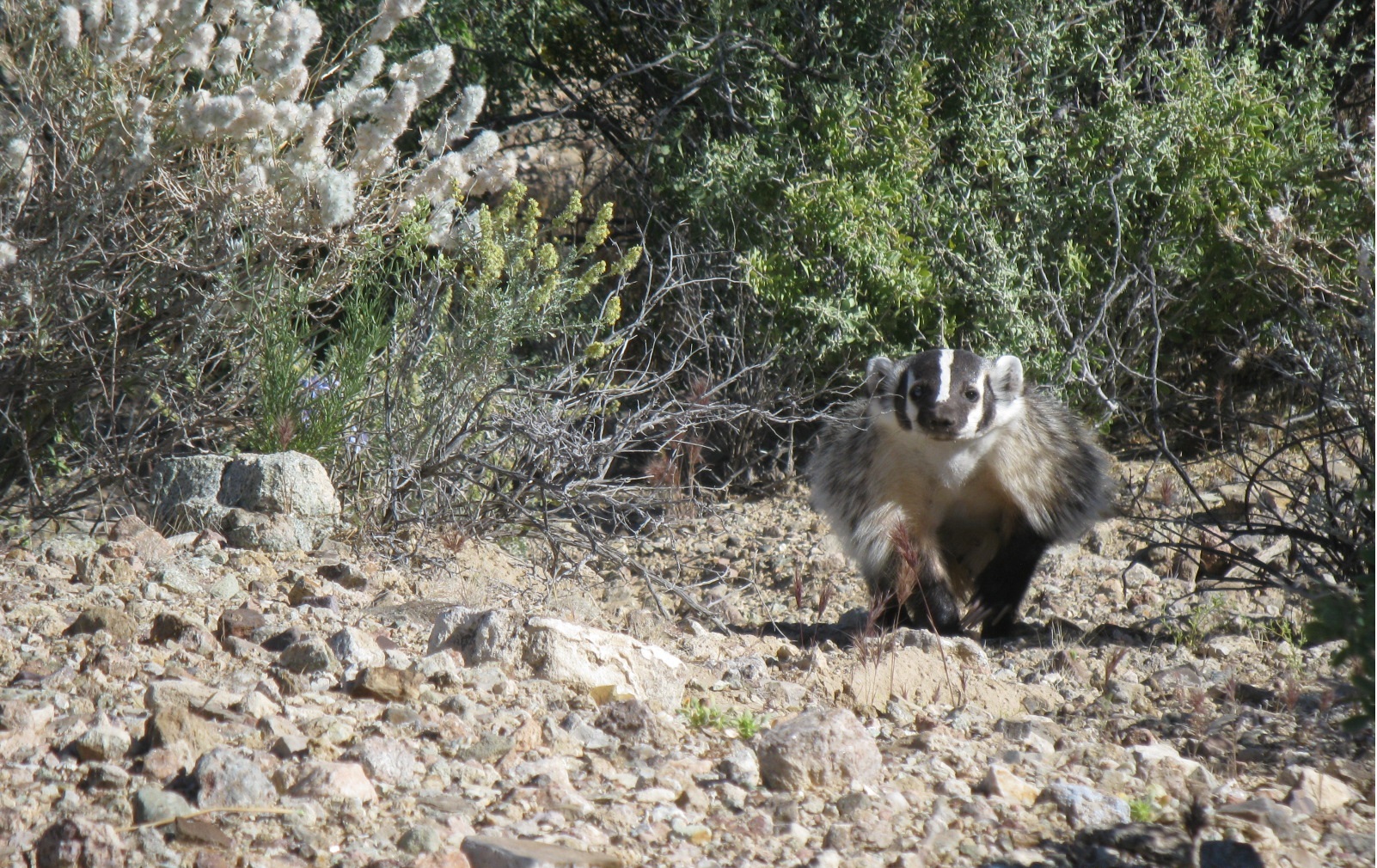Current Distribution Rangewide
From northern Alberta to central Mexico, and from Pacific Coast east through Ohio [1,2]. Ranged throughout California except for humid coastal forests of northwestern California [2].
Known Populations in San Diego County
Localities in the MSPA are mainly valleys in coastal foothills (e.g., Ramona, Pamo Valley, Santa Ysabel, Witch Creek, and Sweetwater Reservoir. Not reported from large mid-elevation meadows on Palomar and Laguna Mountains [4]. Surveys by USGS in 2011 confirmed positive identification of badger scat at 12 sites: Marine Corps Base Camp Pendleton (Juliett and Oscar One), Fallbrook Naval Weapons Station, Daley Ranch in Escondido, Ramona Grasslands, Warner Springs Ranch, Whelan Lake, Crestridge Ecological Reserve, Santa Ysabel Ecological Reserve, Hollenbeck Canyon Wildlife Area, Marron Valley, and the Santa Rosa Plateau [5].
List Status
CSC
Habitat Affinities
Elevational range from below sea level (Death Valley) to 12,000’ (3,660 m; [1]). Occupies diverse habitats in California [2]. Primary requirements appear to be relatively open, uncultivated ground with friable soils and adequate food sources [2]. Preferred areas include grasslands, savannas, mountain meadows near timberline, and desert scrub [2,3]. Seems to prefer sites with low to moderate slope [4]. Burrows used for denning, escape, and predation on burrowing rodents [1]. In Monterey County, home ranges were 1-26 km2 and for den placement badgers preferred native grassland and scrub habitat over riparian/wetland and urban areas, and preferred intermediate slopes to flat slopes [6].
Taxonomy and Genetics
Long [8] recognized 4 subspecies range-wide, with 2 sub-species occurring in California: T.t. jeffersonii (generally more coastal) and T.t. berlandieri (generally inland areas; Table 3). Williams [2] indicates that T.t. jeffersonii (Harlan) generally occurs in more moist areas of California, including coastal areas, and that T.t. berlandieri (Baird) occurs in hotter, drier desert grassland areas of southeastern California and the Central Valley. Differences in opinionon designations for some populations in California [2, 8].
Seasonal Activity
Activity mostly nocturnal in two studies [7,9]; although in the latter study, daytime movement increased in June, July, and early August (attributed primarily to dispersing young and possibly adults and yearlings searching for mates). Males solitary except during the mating season; females generally solitary except in breeding season and when rearing young [1]. At high elevations and latitudes become torpid during winter [1]. Underground stays generally were less than 24 hours, except in winter [9].
Life History/Reproduction
Reported as promiscuous mating system; mate in summer and early autumn, with delayed implantation (February; [7]). Impregnation occurs in females older than 1 year, and occasionally in juvenile (4 to 5 months) females [1]. Young born in March and early April [1,7]. Litter size ranges 1-5 [7].
Diet and Foraging
Throughout the range, prey consists primarily of fossorial rodents in the families Sciuridae and Geomyidae, supplemented by a diversity of smaller rodents, arthropods, and reptiles [9]. In a Wyoming study area where Uinta ground squirrels (Spermophilus armatus) were at very high densities, adult badgers preyed primarily on ground squirrels whereas juveniles consumed more insects than did adults [11].
Dispersal
In Idaho, most young-of-the-year dispersed from their natal area and their movements were more erratic and more frequent than resident badgers; young-of-year also moved into or through farmland or other unsuitable habitats and showed more daytime activity than residents [9]. In Wyoming, male home range areas doubled or tripled in size during the breeding season (mean 8.35 km2) but shrunk during the non-breeding season to closer to that of female home ranges size (mean 2.82 km2; [11]).
Threats
Dramatic declines in California over the last 100 years; have been extirpated from many areas in southern California [2]. Major factors include deliberate killing, agriculture and urban development [2]. Rodent and predator poisoning pose a direct threat through secondary poisoning and reduction in prey. Collisions with vehicles are a significant mortality source for badgers in British Columbia and elsewhere in their range (references in [12]).
Literature Sources
[1] Long, C.A. 1973. Taxidea taxus. Mammalian Species. American Society of Mammalogists. 26: 1-4.
[2] Williams, D.F. 1986. Mammalian species of concern in California. California Department of Fish and Game Report 86-1. Sacramento, CA: California Department of Fish and Game.
[3] MSP-MOM. 2014. Management Strategic Plan Master Occurrence Matrix. http://sdmmp.com/reports_and_products/Reports_Products_MainPage.aspx
[4] Stephenson, J.R., and G.M. Calcarone. 1999. Southern California mountains and foothills assessment: Habitat and species conservation issues. General Technical Report GTR-PSW-172. Albany, CA: Pacific Southwest Research Station, Forest Service, U.S. Department of Agriculture.
[5] Brehme, C.S., C. Rochester, S.A. Hathaway, B.H. Smith, and R.N. Fisher 2012. Rapid assessment of the distribution of American Badgers within western San Diego County. Data Summary prepared for California Department of Fish and Game. 42pp.
[6] Quinn, J.H. 2008. The ecology of the American badger Taxidea taxus in California: assessing conservation needs on multiple scales. PhD Dissertation. University of California, Davis.
[7] Lindzey, F.G. 1978. Movement patterns of badgers in northwestern Utah. Journal of Wildlife Management. 42: 418-422.
[8] Long, C.A. 1972. Taxonomic revision of the North American badger, Taxidea taxus. Journal of Mammalogy. 53: 725-729.
[9] Messick, J.P., and M.G. Hornocker. 1981. Ecology of the badger in southwestern Idaho. Wildlife Monographs. 76: 1-53.
[10] Lindzey, F. G. 1982. Badger, Taxidea taxus. Pp. 653-663 in Wild mammals of North America - biology, management, and economics. (J. A. Chapman and G. A. Feldhammer, editors). Johns Hopkins University Press, Baltimore, MD.
[11] Minta, S.C. 1990. The badger, Taxidea taxus (Carnivora: Mustelidae): Spatio-temporal analysis, dimorphic territorial polygyny, population characteristics, and human influence on ecology. PhD Dissertation. University of California, Davis.
[12] Kinley, T.A. and N.J. Newhouse. 2009. Badger roadkill risk in relation to the presence of culverts and Jersey barriers. Northwest Science, 83(2):148-153. 2009.

